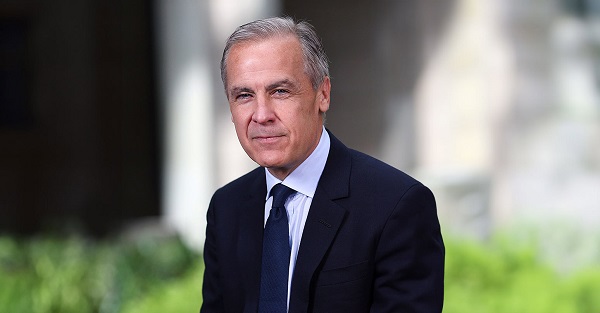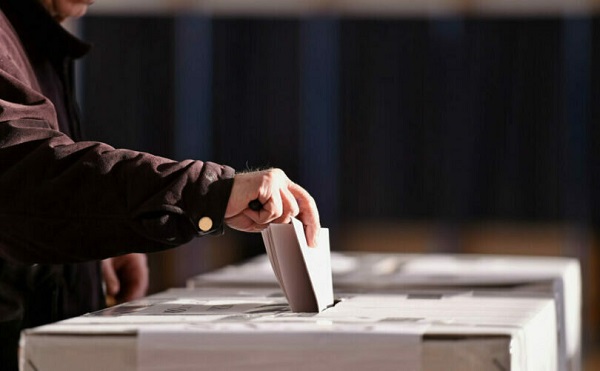Business
Carney says as PM he would replace the Carbon Tax with something ‘more effective’

From the Canadian Taxpayers Federation
Carney stumbles out the gate on carbon taxes
Prime minister hopeful Mark Carney is supposed to be the economic messiah sent to save the Liberals from the depths of polling purgatory.
But right out the gate, Carney showed he doesn’t have an answer to the most important question:
Will he keep the carbon tax?
Carney should have seen that question coming. His campaign leaked to the media that he would scrap the carbon tax. But when reporters asked him that question at his campaign kickoff in Edmonton, he went wonky and wobbly.
It should have been a yes or no answer. Instead, Carney served up an unappetizing word salad.
“If you are going to take out the carbon tax, we should replace it with something that is at least, if not more, effective,” Carney said. “Perception may be that it takes out more than the rebate provides, but reality is different, and Canadians will miss that money.”
Carney’s stance on the carbon tax is clear as mud and it’s bad for two key reasons.
First: he’d replace the carbon tax with something more “effective.”
The carbon tax has been very effective at sucking a lot of money out of the wallets of Canadians. And the carbon tax has been ineffective at hitting the government’s own emissions targets.
The carbon tax is an expensive failure.
Second: Carney parrots the insulting Trudeau government narrative that the carbon tax is all a “perception” problem.
The message is Canadians are too stupid to appreciate the genius of the carbon tax, and if the government could change the perception of the masses, the carbon tax would be just fine.
Worse for Carney, his answer was an assault on his own brand.
Carney’s the guy who is supposed to have his homework done. Instead, he shrugged at the obvious question, saying he’d release a “comprehensive” plan later.
In other words: just trust him.
But here’s the thing: Carney should have had an answer yesterday and taxpayers have trust issues.
When the Liberals won the 2015 election, their platform was sparse on details about their future signature policy. The carbon tax was buried on page 39 of their platform as “a price on carbon.”
The Liberal government imposed a carbon tax in 2019 misleading Canadians, saying the tax would stop at 11 cents per litre of gasoline in 2022.
“The commitment was to go up to 2022,” then environment minister Catherine McKenna said, shortly before the 2019 federal election. “There was no intention to go up beyond that, there’s no secret agenda.”
After the election, the Trudeau government announced it would keep cranking up the carbon tax every year until it cost 37 cents per litre in 2030. Filling up a minivan at that rate would cost nearly $30 extra in just the carbon tax.
The current Liberal government still won’t rule out future carbon tax hikes.
The government also claims most families get more back in rebates than they pay in the carbon tax, despite the Parliamentary Budget Officer issuing three reports confirming the carbon tax costs Canadians.
The carbon tax will cost the average family up to $399 this year, even with the rebates factored in, according to the PBO.
Liberal leadership hopefuls who want to earn trust with taxpayers must push the Trudeau cabinet to scrap the carbon tax immediately.
The next Liberal leader faces a daunting timeline.
When Parliament comes back on March 24, there will be a throne speech, then likely a flurry of confidence motions. This could bring down the government and trigger an election.
On April 1, the government is set to hike the carbon tax.
Does Carney want to hike the carbon tax during the first week of his election campaign?
If Carney is as savvy as we’ve been told, then his answer should be a loud “no.”
To prove to Canadians he’s opposed to the carbon tax, Carney must call on the Trudeau cabinet to scrap it right now.
Business
Stripped and shipped: Patel pushes denaturalization, deportation in Minnesota fraud

FBI Director Kash Patel issued a blunt warning over the weekend as federal investigators continue unraveling a sprawling fraud operation centered in Minnesota, saying the hundreds of millions already uncovered represent “just the tip of a very large iceberg.”
In a lengthy statement posted to social media, Patel said the Federal Bureau of Investigation had quietly surged agents and investigative resources into the state well before the scandal gained traction online. That effort, he said, led to the takedown of an estimated $250 million fraud scheme that stole federal food aid intended for vulnerable children during the COVID pandemic.
According to Patel, the investigation exposed a network of sham vendors, shell companies, and large-scale money laundering operations tied to the Feeding Our Future case. Defendants named by the FBI include Abdiwahab Ahmed Mohamud, Ahmed Ali, Hussein Farah, Abdullahe Nur Jesow, Asha Farhan Hassan, Ousman Camara, and Abdirashid Bixi Dool, each charged with offenses ranging from wire fraud to conspiracy and money laundering.
Patel also said Abdimajid Mohamed Nur and others were charged in a separate attempt to bribe a juror with $120,000 in cash. He noted that several related cases have already resulted in guilty pleas, prison sentences of up to 10 years, and nearly $48 million in restitution orders.
Despite those outcomes, Patel warned the case is far from finished.
“The FBI believes this is just the tip of a very large iceberg,” he said, adding that investigators will continue following the money and that the probe remains ongoing. Patel further confirmed that many of those convicted are being referred to immigration authorities for possible denaturalization and deportation proceedings where legally applicable.
The renewed focus follows a viral video circulated by independent journalist Nick Shirley, which appeared to show multiple childcare and learning centers operating as empty or nonfunctional storefronts. The footage sparked immediate backlash from Republicans, including Vice President JD Vance.
House Majority Whip Tom Emmer accused Minnesota Gov. Tim Walz of sitting idle while massive sums were stolen from taxpayers. Walz addressed the allegations during a November press conference, before the full scope of the fraud became public, saying the scandal “undermines trust in government” and threatens programs meant to help vulnerable residents.
“If you’re committing fraud, no matter where you come from or what you believe, you are going to go to jail,” Walz said at the time.
Authorities say the alleged schemes date back to at least 2015, beginning with overbilling Minnesota’s Child Care Assistance Program and later expanding into Medicaid-funded disability and housing programs. One such housing initiative, aimed at helping seniors and disabled residents secure stable housing, was shut down earlier this year after officials cited what they described as large-scale fraud.
The fallout has already reached the federal level. Last month, President Trump announced the suspension of Temporary Protected Status for Somali nationals, arguing that Minnesota had become a hub for organized welfare fraud and money laundering activity.
Business
Mainstream media missing in action as YouTuber blows lid off massive taxpayer fraud

Vice President JD Vance is giving public credit to a YouTube journalist for doing what he says legacy media and elite institutions have failed to do: follow the money in Minnesota. In a post on X, Vance praised independent reporter Nick Shirley for digging into alleged fraud networks tied to the state, saying Shirley “has done far more useful journalism than any of the winners of the 2024 Pulitzer prizes.” The comment was a direct response to a video Shirley shared online documenting what he described as widespread fraud, with Shirley claiming his team identified more than $110 million in suspicious activity in a single day while confronting facilities allegedly receiving millions in public funds.
Shirley’s reporting has been circulating widely among conservatives, with commentators amplifying clips of him visiting supposed daycare and education centers that appeared inactive despite receiving massive federal aid. Conservative media personality Benny Johnson said Shirley had exposed more than $100 million in Minnesota Somali-linked fraud routed through fake daycare and healthcare fronts, adding to the pressure on state leadership. The issue gained further traction after Tom Emmer, Minnesota’s top House Republican, demanded answers from Gov. Tim Walz following a viral clip showing Shirley confronting workers at an alleged daycare in South Minneapolis. Shirley reported the center, called the “Quality Learning Center,” showed no visible activity despite claims it served up to 99 children, and even misspelled “learning” on its signage. As Shirley approached, a woman inside was heard shouting “Don’t open up,” while incorrectly accusing him of being an ICE agent.
🚨 Here is the full 42 minutes of my crew and I exposing Minnesota fraud, this might be my most important work yet. We uncovered over $110,000,000 in ONE day. Like it and share it around like wildfire! Its time to hold these corrupt politicians and fraudsters accountable
We ALL… pic.twitter.com/E3Penx2o7a
— Nick shirley (@nickshirleyy) December 26, 2025
The controversy builds on earlier reporting from City Journal, which published a November investigation citing federal counterterrorism sources who said millions of dollars siphoned through Minnesota fraud schemes had been sent overseas, with some of the money allegedly ending up in the hands of Al-Shabaab. One confidential source quoted in the report bluntly claimed, “The largest funder of Al-Shabaab is the Minnesota taxpayer.” Since that report, the scrutiny has widened inside the Trump administration. Treasury Secretary Scott Bessent has announced that the Treasury Department is examining whether Minnesota taxpayer funds were diverted to terrorist-linked groups, while Education Secretary Linda McMahon has publicly called on Walz to resign amid separate allegations of large-scale education fraud within the state’s college system.
Taken together, the attention from Vance, congressional Republicans, and multiple federal agencies has elevated Shirley’s reporting from viral internet content to a flashpoint in a broader debate over fraud, accountability, and the role of independent journalists. For the vice president, the message was clear: real accountability sometimes comes not from prize committees or press rooms, but from outsiders willing to ask uncomfortable questions and stand in front of locked doors with a camera rolling.
-

 Digital ID21 hours ago
Digital ID21 hours agoCanadian government launches trial version of digital ID for certain licenses, permits
-

 Agriculture23 hours ago
Agriculture23 hours agoEnd Supply Management—For the Sake of Canadian Consumers
-

 Alberta20 hours ago
Alberta20 hours agoAlberta Next Panel calls to reform how Canada works
-

 Business18 hours ago
Business18 hours agoThe “Disruptor-in-Chief” places Canada in the crosshairs
-

 International15 hours ago
International15 hours agoGeorgia county admits illegally certifying 315k ballots in 2020 presidential election
-

 Artificial Intelligence19 hours ago
Artificial Intelligence19 hours agoUK Police Pilot AI System to Track “Suspicious” Driver Journeys
-

 Energy14 hours ago
Energy14 hours ago‘The electric story is over’
-

 International22 hours ago
International22 hours agoWorld-leading biochemist debunks evolutionary theory






